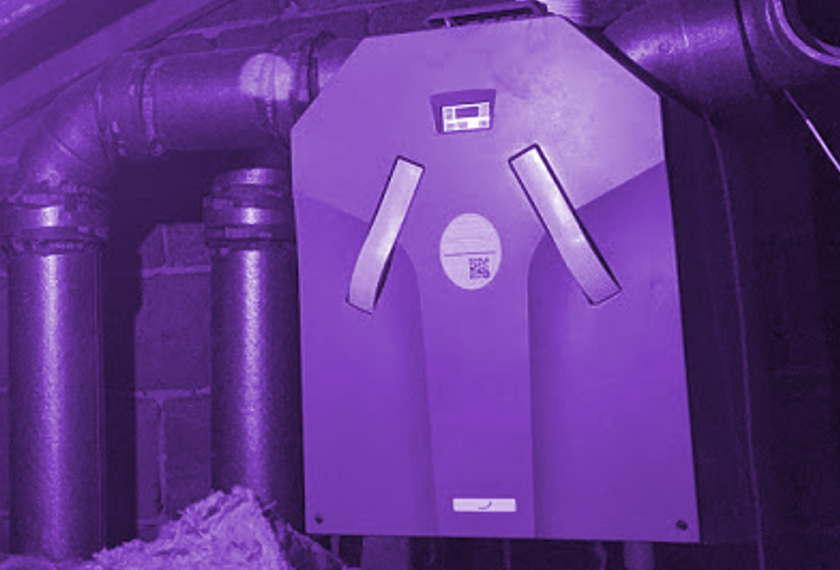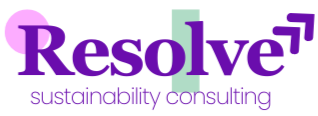
Unlocking the Benefits of MVHR: A Guide to Mechanical Ventilation with Heat Recovery for Rental Properties
As rental property owners, homeowners and developers look for ways to improve tenant satisfaction, reduce maintenance costs, and enhance energy efficiency, Mechanical Ventilation with Heat Recovery (MVHR) systems emerge as a compelling solution. Whether you’re managing a BRRR (Buy, Refurbish, Rent, Refinance, Repeat) property, operating a house in multiple occupation (HMO), or upgrading a rental portfolio, MVHR offers significant advantages.
This blog explores the basics of MVHR, its benefits for rental properties, and how it can help you attract tenants, ensure regulatory compliance, and maximise returns on your investment.
What is this MVHR? The Future of Sustainable Rentals.
MVHR, or Mechanical Ventilation with Heat Recovery, is a system designed to improve indoor air quality while reducing energy consumption in rental properties. It is a pivotal component in the Passive House (PH), low energy design, see our first blog for more on PH. By providing continuous ventilation, it recovers heat from outgoing air to warm the incoming fresh air, creating a more comfortable and energy-efficient living environment.
Here’s how it works:
Air Extraction: Stale, warm air is extracted from high-moisture areas like kitchens and bathrooms.
Fresh Air Intake: Fresh, filtered air is drawn from outside, removing pollutants and allergens before circulating it into living spaces like bedrooms and lounges.
Heat Recovery: The outgoing air passes through a heat exchanger, transferring its heat to the incoming air without mixing the two, reducing energy waste.
Distribution: The warmed, filtered air is distributed through ducting into various parts of the property.
The key components of an MVHR system include:
Heat Exchanger: Transfers heat from the outgoing air to the incoming air, efficiently reducing energy loss.
Ducting: Delivers air throughout the property, connecting both wet rooms and living spaces.
Fans: Low-energy fans maintain a steady airflow, ensuring continuous ventilation.
Filters: Remove dust, pollen, and pollutants, ensuring cleaner indoor air.
Smart Controls: Many systems come with app-based or automated controls, enabling landlords and tenants to monitor and adjust performance remotely.
The result is cleaner air, reduced humidity, and lower energy costs, benefiting both tenants and landlords by improving living conditions while boosting energy efficiency. MVHR is quickly becoming a must-have in sustainable properties. Now the technology is becoming more common, why shouldn’t rental properties reap the rewards of such systems. See this YouTube video for a visual representation.
Why Every Landlord Should Consider MVHR:
As a landlord or property developer, you face unique challenges. Ensuring tenant comfort, maintaining properties, and meeting energy efficiency standards are top priorities. Whilst stepping foot in the property as little as possible. Here’s why MVHR is a smart investment for rental properties:
1. Enhanced Tenant Satisfaction
Tenants increasingly value clean, comfortable, and energy-efficient living spaces. MVHR provides:
- Improved Air Quality: Filters remove dust, pollen, and pollutants, creating a healthier environment.
- Moisture Control: By extracting damp air, MVHR prevents mould growth, a common issue in rental properties.
- Consistent Temperatures: MVHR minimises draughts and temperature fluctuations, ensuring year-round comfort.
These benefits make your property more attractive to tenants, increasing demand and reducing void periods.
2. Energy Efficiency and Cost Savings
One of the most significant advantages of MVHR is its ability to recover up to 90% of the heat from outgoing air. Instead of heating cold, fresh air to living temperature, the heating system only needs to top up pre-warmed air supplied by MVHR. This efficiency:
- Reduces energy bills for tenants and landlords, making your property more appealing.
- Lowers your property’s carbon footprint.
- Future-proofs your property against rising energy standards and utility costs.
3. Reduced Maintenance Costs
Humidity and poor ventilation often lead to damp and mould, resulting in costly repairs. MVHR addresses these issues by maintaining optimal indoor moisture levels. Additionally, regular maintenance of MVHR systems (e.g., filter changes) is straightforward and helps prevent long-term damage to the property.
4. Regulatory Compliance
With stricter building regulations focused on energy efficiency and ventilation, MVHR ensures compliance. Meeting these standards not only avoids potential fines but also enhances the marketability of your property. The spotlight brought by the tragic death of Awaab and the new Awaab’s law has highlighted the importance of property free of mould spores. The law makes clear that tenants can no longer be blamed for the presence of damp and mould. It is the responsibility of the landlord to stop such issues. Read more on what is expected of landlords regarding damp and mould.
5. Increased Property Value
Energy-efficient properties with modern ventilation systems are highly sought after. Studies suggest there is a premium for more energy efficient properties. See our blog that tackles that very topic. Installing MVHR alongside other energy saving interventions can boost your property’s value, ensuring a higher return on investment whether you plan to sell or refinance.
Preparing Your Property for MVHR: What Landlords Need to Know
While MVHR offers many benefits, certain conditions make its installation and operation more effective. Here are some key prerequisites to consider:
- Back-to-Brick Development: MVHR installation is intrusive, requiring significant access to walls and ceilings for ductwork. A back-to-brick refurbishment provides the ideal opportunity to incorporate the system seamlessly.
- Reasonable Airtightness: The property should have a good level of airtightness to prevent energy loss and maximise the efficiency of the MVHR system. Airtightness can be assessed and improved during refurbishment if necessary. Any improvement in the leakiness of a property will not only help improve the MVHR system but will have a direct money-saving effect due to fewer draughts.
- Space for the MVHR Unit: The MVHR unit itself is slightly smaller than a washing machine. Common locations include attic spaces, plant rooms, or areas adjacent to heating systems. For smaller projects, compact units can be used that are more discreet while still delivering excellent performance, such as between the joists. The unit must, however, be in close proximity to an outside wall.
Addressing these prerequisites during the planning stage ensures that the MVHR system integrates smoothly into your property, delivering optimal results.
Tackling Humidity and Energy Waste in HMOs
Houses in Multiple Occupation (HMOs) present unique challenges for ventilation and energy efficiency. Multiple tenants sharing kitchens and bathrooms can lead to increased moisture levels and odour issues. MVHR provides a robust solution by:
- Managing High Humidity: Extracting damp air from wet rooms prevents condensation and mould. This can automatically boost when higher humidity is detected.
- Improving Air Circulation: Ensuring that all rooms receive fresh, filtered air.
- Reducing Energy Costs: Heat recovery minimises energy waste, even in properties with high occupancy rates. The bill payer will see this reflected in lowering bills.
By addressing these challenges, MVHR creates a healthier, more comfortable environment for tenants, leading to longer tenancies and fewer complaints.
MVHR for BRRR Success: Elevating Energy Efficiency and Tenant Appeal
For BRRR investors, adding MVHR during the refurbishment phase can significantly enhance a property’s performance and value. Here’s how:
- Attract Tenants Quickly: Energy-efficient properties with modern ventilation systems stand out in competitive rental markets.
- Maximise Rent Potential: Enhanced comfort and lower utility bills justify higher rent levels.
- Support Long-Term ROI: Improved durability and reduced maintenance protect your investment over time.
By incorporating MVHR, BRRR investors can elevate their properties to meet tenant expectations and energy standards, securing a strong position in the rental market.
Landlord FAQs on MVHR
While MVHR offers numerous benefits, landlords may have reservations about installation and costs. Let’s address these concerns:
- Upfront Costs: While the initial investment may seem high approximately £4000, the long-term savings on energy bills and maintenance make MVHR very cost-effective. Slashing your energy bill in your first winter by recovery up to 90% of heat.
- Integration in Older Properties: Retrofitting MVHR into older buildings is possible with careful planning. Resolve Consulting can recommend solutions tailored to your property’s structure.
- Maintenance Requirements: Regular filter changes and servicing are simple and ensure the system operates efficiently. Typically, twice yearly. Tenants can also be educated on basic upkeep.
Unlock the MVHR Advantage with Resolve Consulting
Mechanical Ventilation with Heat Recovery is more than a ventilation system. It’s a tool for enhancing property performance, tenant satisfaction, and long-term profitability. Whether you’re developing an HMO, refurbishing a BRRR property, or growing a rental portfolio, MVHRs can be a trick you didn’t even know you had up your sleeve. Resolve can help modify your latest design plans to firstly reduce your energy demand with fabric first interventions but then secondly integrate green technologies such as MVHR as smoothly as possible.
Resolve can design your system, determining the size of the unit, and the plan for the ducting system. By adopting MVHR, landlords and property developers can meet modern demands for energy efficiency and sustainable living, in a discrete and ingenious way, setting their properties apart in a competitive market and slashing their heating demand by up to 90%.
Contact resolve today for an initial free consultation to discuss your coming project.

